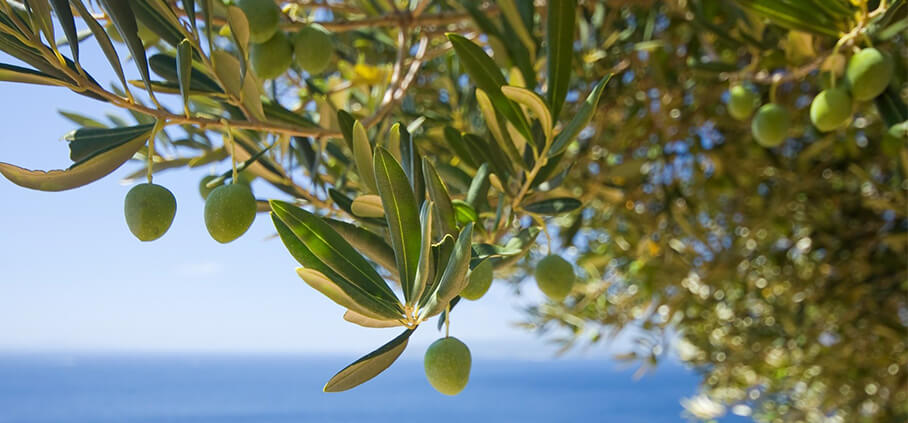
Pruning olive trees is a crucial part of caring and growing them. The Australian climate is perfect for olive trees and anyone who wants to have their tree, can. Olive trees are grown in most areas in the world. You can even grow them in containers inside your house.
So, if you’re a person who lives in Australia and has an olive tree or more, this post is for you. In this post, we talk about how to prune a tree and when is the best time to do so.
Tools you’re going to need
The best tools you can get for trimming and pruning olive trees are:
- a pair of sharp hand shears;
- a pair of long-handled loppers;
- a short, stiff pruning saw;
- a chainsaw (for trees with massive and thick limbs);
These can be used depending on the branches you need to cut, respectively. The main thing to keep in mind is to keep the tools sharp so that you can do clean cuts without damaging the fragile branches. For example, older trees with dead or large branches can be pruned with the chainsaw. While when shaping the tree’s crown, you should use a pair of hand shears or long-handled loppers if the tree is high.
For young trees with softer branches and twigs (also for potted olive trees), you can use a smaller pair of hand shears.
Difference between thinning and heading cuts
Before you begin, we’d like to mention the difference between thinning and heading cuts. Thinning cuts don’t change the crown shape of the tree. It is simply cleaning out the bigger branches from smaller and useless ones. Thinning cuts improve the air circulation between branches and help light get to fruit on the inside of the crown.
Heading cuts, on the other hand, change the way the tree grows. These are also used to control the height of the tree.
How to prune olive trees
It is vital to know how to prune an olive tree when you have one under your care. All olive tree types are dual fruiters. This means that one year they give a lot of fruit and the next one barely any. With proper light yearly pruning, you can have better fruit seasons.
The crowns of olive trees tend to get very dense and shrubbery. With pruning, you create an excellent airflow which helps control diseases and pests, plus fruits will ripen better and evenly.
Before you get to work, make sure to put on safety goggles and gloves.
So here are the steps for pruning an olive tree:
Gather the tools you’ll need and make sure they are sharp enough.
Circle the tree to see what and where needs pruning and trimming and whether you need thinning cuts only or heading cuts as well.
Start from the base up. Remove all suckers and new growths from the stem and keep going up the tree.
Cut off all downward facing branches.
Cut off branches that grow through others.
Lastly, trim the edges of the remaining branches if necessary, to maintain its shape.
How to prune olive trees in pots
It is not rare to have an olive tree in a pot. It’s a standard option for people who do not have much space or a garden at all but want to have and care for an olive tree. But is pruning the trees that grow in the soil the same as pruning the ones in pots?
Here is how to prune olive trees in pots:
- Prune potted plants in spring.
- Potted olive trees should be trimmed lightly once a year, instead of severe pruning once every two years.
- Olive trees in pots should have between 3 and 5 main branches so stick to that number when pruning.
- You should remove branches that are growing from the base of the tree.
- Trim branches that grow towards the centre of the tree and downwards.
- Naturally, cut the points of the big branches as well. This will keep the tree to an appropriate for your home size and maintain its foliage bushy.
When to prune an olive tree in Australia
So when to prune olive trees in Australia? In warmer climates, such as the Australian, the time isn’t as risky as it is in colder climates. However, several criteria need to be met when pruning an olive tree.
The ideal time for pruning olive trees in Australia is after winter rains are finished but before the tree flowers. The time winter-spring is okay to do this task with several other specifics.
You must not prune an olive tree when it’s raining. The best time would be a couple of days before or after it has rained. Why is it so important? Because pruning the tree right before it rains poses a risk of moisture entering the cuts and lead to rot. And pruning too late doesn’t give the tree enough time for growth and increased blossom production.
How young the olive tree should be to prune it
You can start worrying about pruning your olive tree when it gets to at least two years. The healthier the tree, the less trimming it would need. Light pruning of the tree can lead to more fruit production. Also, for both young and older trees, suckers should be pruned as well. Suckers draw the essential nutrients from the upper and bigger branches and cause low fruit production. Plus they simply do not fit with the growth of the tree and do not serve any good purpose.
If your olive tree is old and there are dead branches, remove them all. Then remove the suckers and lastly, you can do some light trimming to the healthy branches and shape the tree per your wishes.
Takeaways
To sum up, taking care of an olive tree in the Australian climate isn’t a Herculean task. It doesn’t take up much of your time. Olive trees are relatively easy to look after, what they need are sunlight and water, and some proper yearly pruning.
As you can see from our post, to trim your tree you need to know:
- When is the right time to prune to avoid damaging the tree;
- The two types of cuts so you choose the right one for your tree;
- Have sharp tools to do the trimming and pruning.
Tree pruning seems like too much work?
A reliable Fantastic gardener can take care of your trees!








